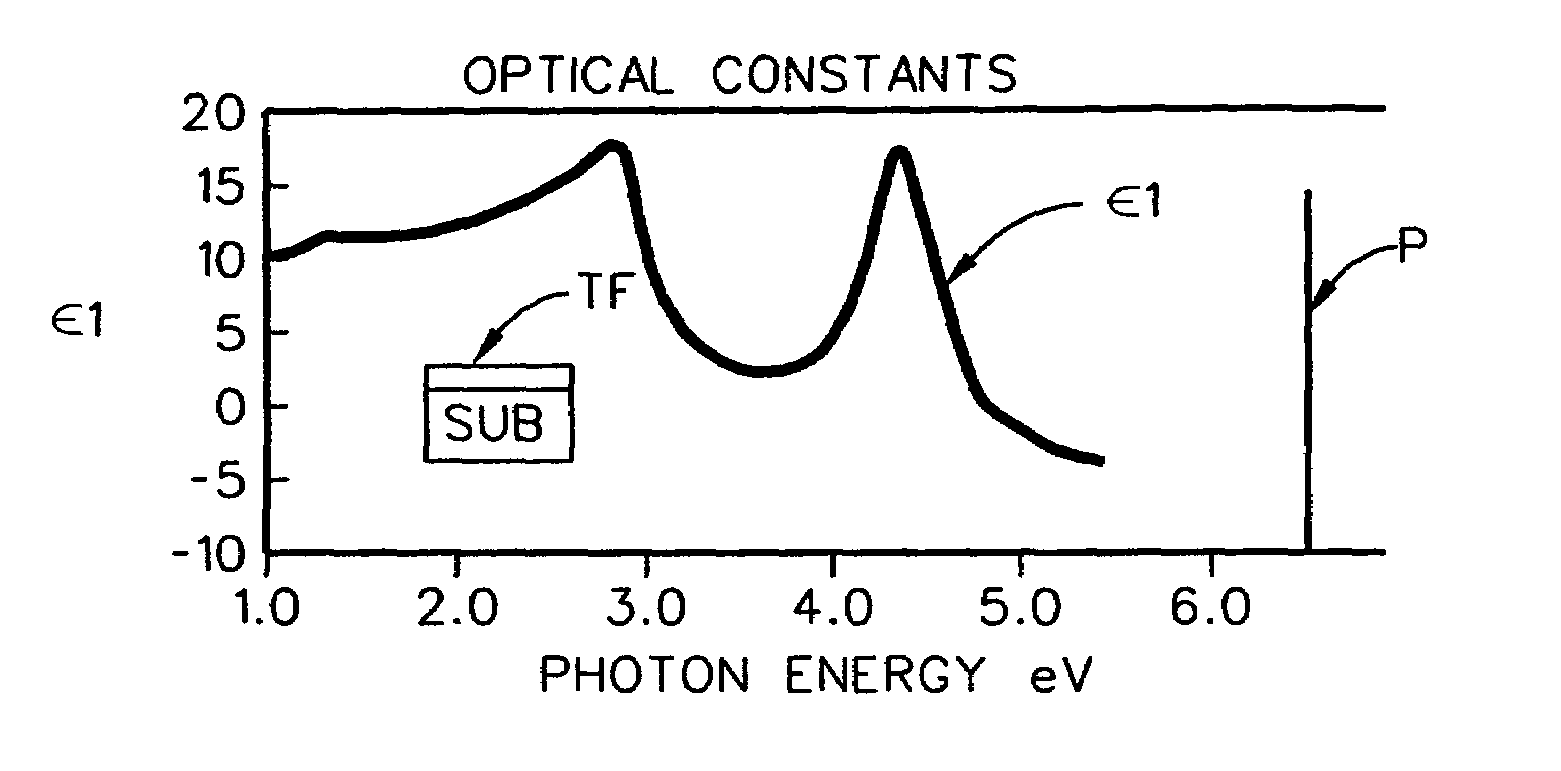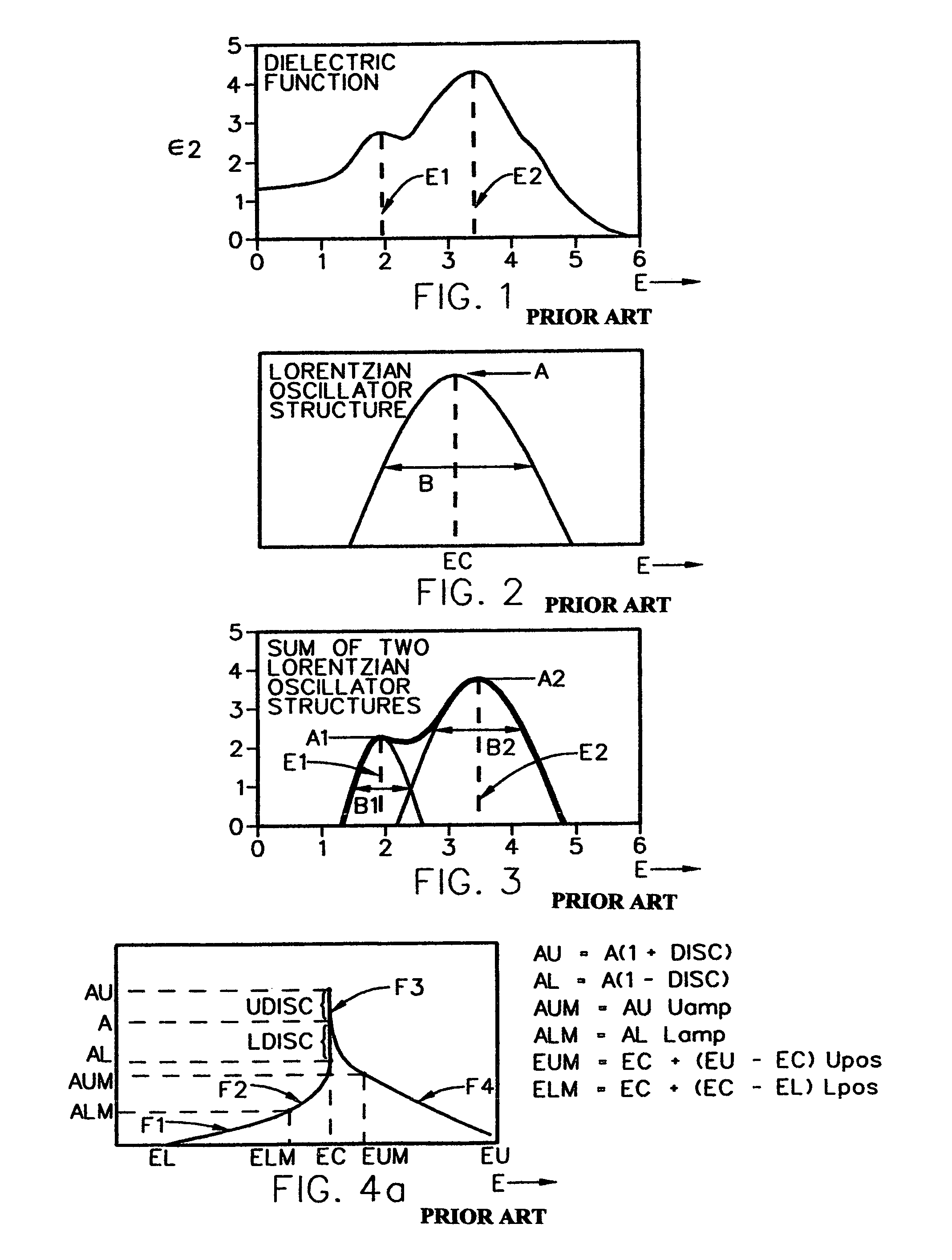Method of applying parametric oscillators to model dielectric functions
a parametric oscillator and dielectric function technology, applied in the field of modeling data, can solve the problems of insufficient flexibility to accurately fit existing dielectric functions, inability to describe direct-energy-band gap spectral regions, and needing extra fictitious oscillators
- Summary
- Abstract
- Description
- Claims
- Application Information
AI Technical Summary
Benefits of technology
Problems solved by technology
Method used
Image
Examples
Embodiment Construction
[0076]It is announced at this point that FIGS. 1–4e and 5 and 6 are incorporated from U.S. Pat. No. 5,796,983 for general insight, FIGS. 4f–4k identify additional oscillator structures which can be applied in present invention, and FIGS. 7–8k demonstrate the presently disclosed invention methodology.
[0077]As disclosed in U.S. Pat. No. 5,796,983 and included herein for background and insight, there is shown in FIG. 1, a plot of data corresponding to the Imaginary Component (e2) of a presumed Dielectric Function vs. Energy, which plot is representative of that which might be obtained from investigation of a semiconductor material. Note the presence of two dependent variable “Peak” regions, located at “E1” and “E2” on the independent variable “X” axis. Next, FIG. 2 shows the general shape of a Narrow Lorentzian or Gaussian Oscillator Structure centered about a point labeled “EC” on the independent variable “X” axis. (While not shown other Mathematical “Oscillator Structures” could also...
PUM
 Login to View More
Login to View More Abstract
Description
Claims
Application Information
 Login to View More
Login to View More - R&D
- Intellectual Property
- Life Sciences
- Materials
- Tech Scout
- Unparalleled Data Quality
- Higher Quality Content
- 60% Fewer Hallucinations
Browse by: Latest US Patents, China's latest patents, Technical Efficacy Thesaurus, Application Domain, Technology Topic, Popular Technical Reports.
© 2025 PatSnap. All rights reserved.Legal|Privacy policy|Modern Slavery Act Transparency Statement|Sitemap|About US| Contact US: help@patsnap.com



